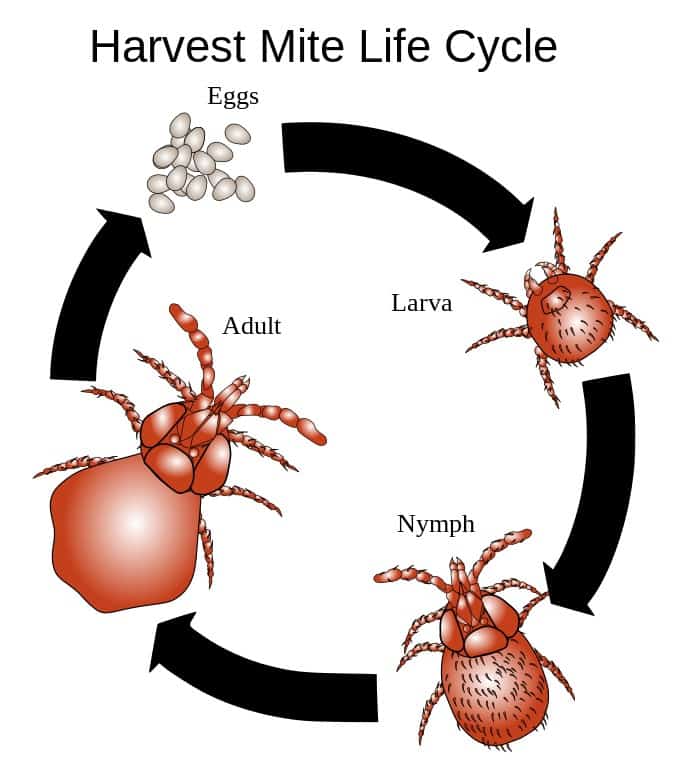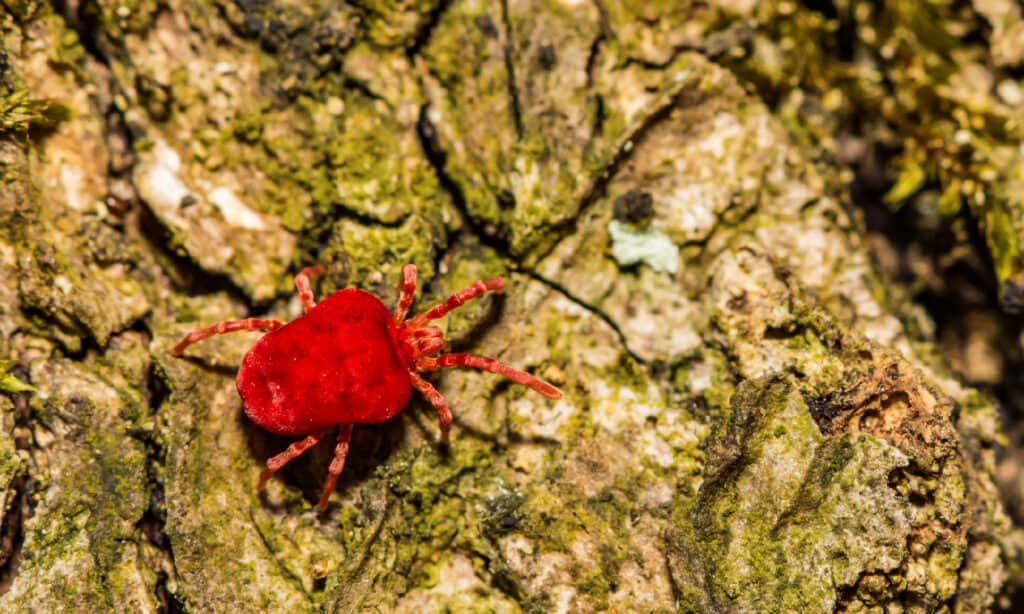In Texas, summer means scorching heat, iced tea, wishing for rain, and, unfortunately, chiggers. The scariest things are those you can’t see, and chiggers fall under that category. While these microscopic bugs are almost impossible to spot with the naked eye, their presence leaves an obvious and excruciatingly irritating rash, making poison ivy pale in comparison.
Despite being tiny, chiggers have powerful bites. In Texas, chiggers are abundant and prefer warm, moist grass. Even though they don’t transmit any diseases, the annoyance they create is reason enough to take all reasonable precautions to keep them from touching you ever again. But what are the chiggers found in Texas, and how do we avoid them?
There is good and bad news about the savage insects known as chiggers. Let’s start with the good news: contrary to popular belief, these creepy-crawlies do not feed on human blood or burrow into human skin. The bad news is that a chigger bite itches a lot and may induce an uncontrollable itchy feeling that lasts for two or even three weeks. This article will explore everything there is to know about chiggers in Texas and provide helpful tips about their bites.
What are Chiggers?

In Texas, “chigger” commonly describes the parasitic larval stage of mites belonging to
Eutrombicula.
Chiggers, along with ticks, scorpions, and other members of the Arachnida class, are more closely related to spiders than insects. The larval stage of several mites in the Trombiculidae family is known as a chigger. Scientists call these creatures “trombiculid mites,” but they may also go by the names harvest mites, bugs, lice, mower’s mites, or red bugs. In Texas, “chigger” commonly describes the parasitic larval stage of mites belonging to Eutrombicula.
Chiggers have four life stages: egg, larva, nymph, and adult; only the chigger larvae are parasitic. Chiggers have a round, reddish, or reddish-yellow colored body and are only 0.006 to 0.017 inches long. However, some key characteristics that distinguish arachnids from insects include having eight legs as adults and having neither wings nor antennae.
What are the Chiggers Found in Texas?
Even though Texas is home to numerous chigger species, only two of them are troublesome to humans. One, Eutrombicula alfreddugesi, is found in weedy and grassy regions, overgrown berry patches, and the borders of wooded areas. Eutrombicula splendens, the other species, favors damp environments like marshes, bogs, and rotting logs. Their distribution varies even within these advantageous settings, and they could be very concentrated in one area and almost nonexistent in another.
Chiggers are not present in the northern regions, at great elevations, or in extremely arid parts of the United States. They prefer to reside near the ground, in and around densely vegetated places. This is why it’s a good idea to avoid places with overgrown grass, weeds, shrubs, bushes, brush, berry thickets, pond edges, or riverbanks when strolling through public gardens or trekking in the woods.
Eutrombicula chiggers favor birds, reptiles, rodents, and other small animals as hosts. Humans do not make good hosts, although chiggers will quickly bite them if given a chance. Due to people’s allergic reactions and constant scratching, chiggers frequently do not survive on humans for longer than 1 or 2 days.
Why is There a Chigger Problem?

The prevalence of the humid weather in Texas is the reason chiggers can flourish.
©iStock.com/dna_beeb
Chigger populations can flourish in Texas because of the humid weather that prevails there for a large portion of the year. Chiggers may become an issue in your yard if it has the dampness and foliage they require to thrive.
How Do Chiggers Bite?
Contrary to popular belief, chiggers do not penetrate the skin of their hosts or ingest blood. Before deciding where to feed, they often latch onto shoes or clothing and spend many hours exploring the host. Chigger bites are more prevalent in areas with tight clothing options or thinner skin. The areas around the sock lines on the ankles where socks fit snugly, around the waist, and close to the genital area are where bites are most frequently encountered. Bites can also happen in other spots, such as beneath the armpit and behind the knee. Chiggers will then pierce tiny holes with their razor-sharp, jaw-like claws and administer saliva, which causes part of your cells to liquefy. Those liquefied cells are food for chiggers.
Within 3 to 6 hours of the initial bite, itching typically starts, followed by the development of reddish patches and, occasionally, clear pustules or lumps. It may completely enclose the feeding chigger as the skin turns red and bloated, giving the impression that the chigger has burrowed into the host’s skin. The itching from chigger bites normally peaks 24 to 48 hours after the bite, although for some people, the redness and itching may last a week or more.
Are Chiggers Dangerous?

Chigger bites often result in a raised, red, itchy rash.
©iStock.com/JasonOndreicka
Adult trombiculid mites are harmless to humans and feed only on plants. Chigger larvae, however, are the ones that pose a danger to people. Chigger bites often result in a raised, red, itchy rash. Persistent itching might cause secondary infections, particularly in young children. However, unlike mosquitoes and ticks, these pests don’t typically spread diseases. Still, infections are a serious problem that can lead to fevers and worsen.
How Should Chigger Bites Be Treated?
Chigger bites can be treated in many ways, some of which are more efficient than others. You might need to try various remedies because everyone’s response to bites differs. First, check your body to see if there are any chiggers left, especially around your waist, groin, and bra line.
Within a few hours of coming into contact with chiggers, take a warm, soapy shower or bath to reduce the quantity and severity of bites. Use a washcloth to vigorously scrub your skin to remove any mites that may have just lodged there. Then use an over-the-counter anti-itch cream or ointment on your bites to treat them; a cold compress may also provide some relief.
Usually, chigger bites heal on their own. If yours are still hurting after a few days, visit your doctor. Rarely, you might require injections to reduce swelling and itching. If your bites become infected, your doctor might advise you to take antibiotics.
Thank you for reading! Have some feedback for us? Contact the AZ Animals editorial team.








